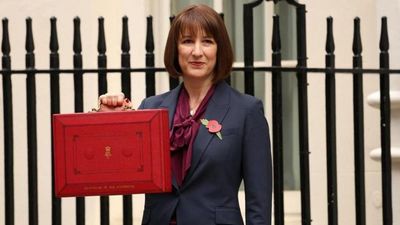

Unlocking housing development
Reeves has committed £5bn to deliver the UK Government’s housing plan, which includes increasing the Affordable Homes Programme to £3.1bn, providing £3bn to increase the supply of homes and support small housebuilders, and £128 million to support new housing projects across the country.
These projects include tackling river pollution that is currently blocking the construction of up to 28,000 new homes, investment in 3,000 energy-efficient properties nationwide, and £56 million for the development of 2,000 homes at Liverpool Central Docks.
Further investment details will be announced at the Spending Review, and will include support for councils and housing associations to increase their capacity to build affordable housing
In addition, Reeves pledged £1bn to accelerate the removal of dangerous cladding on homes, following the Grenfell Tower report.
Taxation
Business Rates
The Labour Party made a long-term election promise to abolish business rates, but the Treasury cannot yet afford to lose all of the £30 billion generated by the tax.
Instead, the current 75% discount to business rates, which is due to expire in April 2025, will be replaced by a discount of 40% for eligible retail, hospitality and leisure properties in England – up to a maximum discount of £110k.
Stamp Duty Land Tax (SDLT)
The changes to SDLT are focused on the Higher Rates for Additional Dwellings (HRAD), which apply to UK or foreign buyers purchasing second homes or buy-to-let residential properties, and companies purchasing residential property, in England and Northern Ireland.
The HRAD will increase from 3% to 5% from 31 October 2024.
Since it was first proposed in 2019, Propertymark has cautioned the UK Government that HRAD for non-UK residents will do little to improve the level of homeownership for UK residents, and risks dissuading potential rental property investors, exacerbating the housing supply shortage. This measure is intended to indirectly benefit movers and first time buyers by giving them a comparative advantage in the market, and the Treasury estimates that it will generate 130,000 additional main-home property transactions over the next five years.
Capital gains tax
The rates for residential property remain unchanged at 18% and 24%.
Inheritance tax
Reeves extended the inheritance tax threshold freeze for a further two years, to 2030.
That means the first £325,000 of any estate can be inherited tax-free, rising to £500,000 if the estate includes a residence passed to direct descendants, and £1m when a tax free allowance is passed to a surviving spouse or civil partner.
Propertymark advocates for revising Inheritance Tax (IHT) thresholds, which have remained unchanged since 2009, with the result that the threshold no longer aligns with inflation and property price increases, resulting in more properties falling under IHT.
National insurance and minimum wage
National Insurance contributions by employers will rise from 13.8% to 15%, and the threshold at which businesses start paying National Insurance on a workers’ earnings will be lowered from £9,100 to £5,000.
To support small businesses with these changes, the Employment Allowance will rise from £5,000 to £10,500 and the £100,000 threshold will be removed, allowing more businesses to claim back from their bill. The Chancellor stated that this means that 865,000 employers will pay no NICs next year, and a further 1 million will pay the same as they did previously.
It has also been confirmed that the National Living Wage will rise in April 2025 as the first step in a move to a single rate for all adults. Apprentices will earn £7.55 an hour, 18-20 year-olds will get £10, and over 21’s will jump 6.7% to £12.21 per hour.
Social rents and Right-To-Buy
The Treasury plans to increase annual social rents in England by the CPI inflation rate plus an additional 1%. This means a potential increase of 2.7% based on the current CPI of 1.7%.
This move is expected to provide more certainty for long-term investment in social housing, enabling the building of tens of thousands of new properties, but also risks increased spending on housing benefits.
To protect existing social housing stock, Right to Buy discounts will be reduced to ensure more council homes remain within the sector. Councils will also be able to keep 100% of the receipts generated from Right to Buy sales, allowing them to further invest in new social housing development.
Universal credit
Working age benefits will be uprated by the September 2024 Consumer Price Index of 1.7% from April 2025, which should see around 5.7 million families recieve an extra £150 a year.
This is a step in the right direction for those struggling to meet increasing rental costs. Recent estimates suggest fewer than 10% of private rented homes in the UK are affordable for people on Universal Credit, specifically those relying on Local Housing Allowance (LHA) rates.
